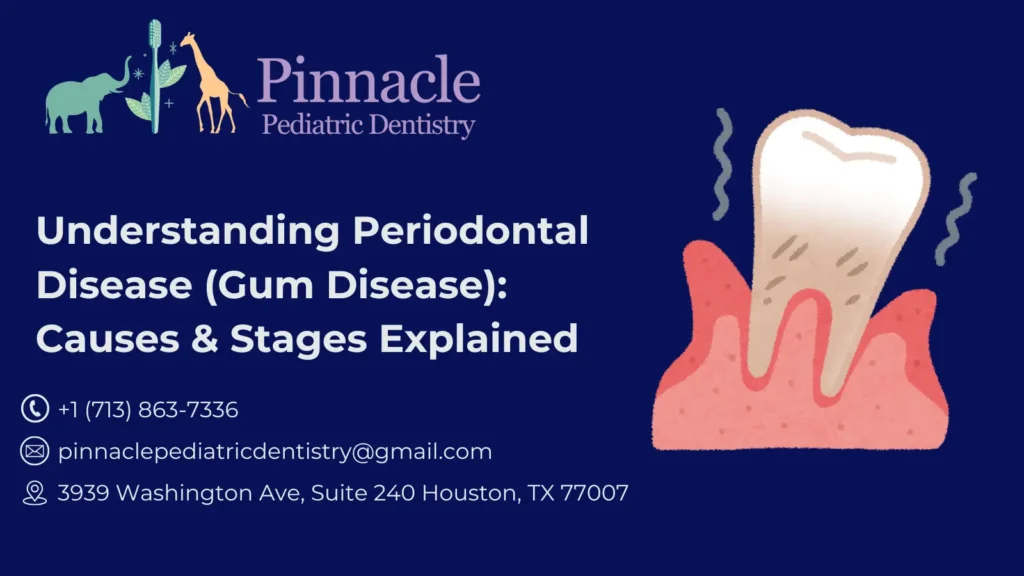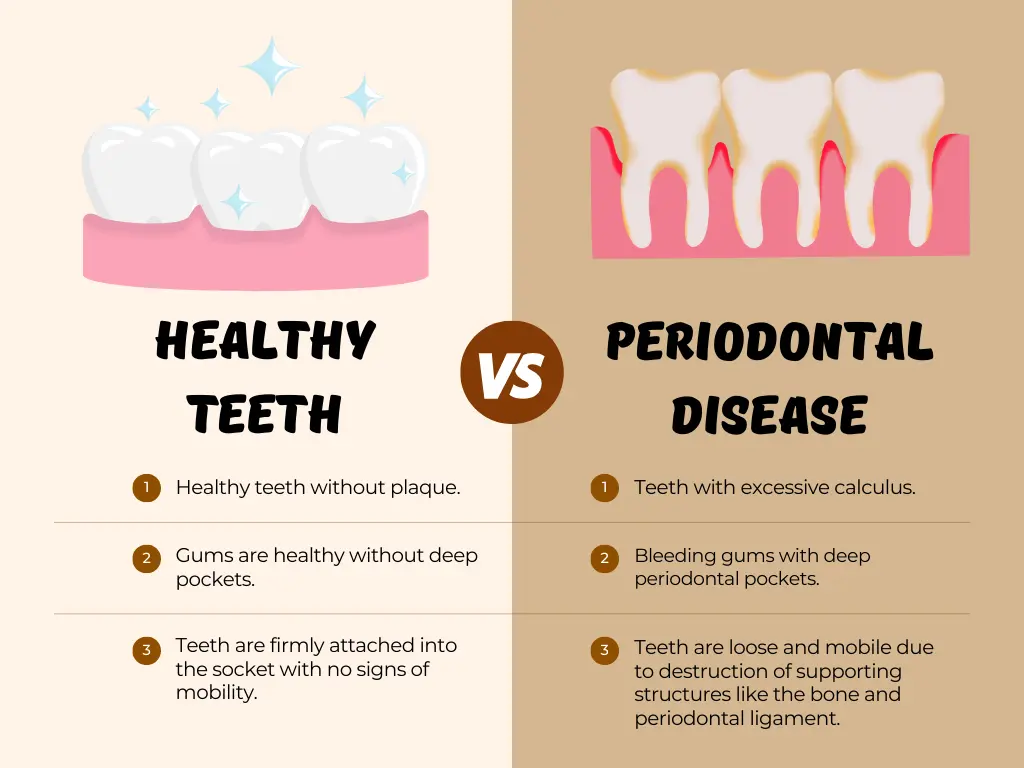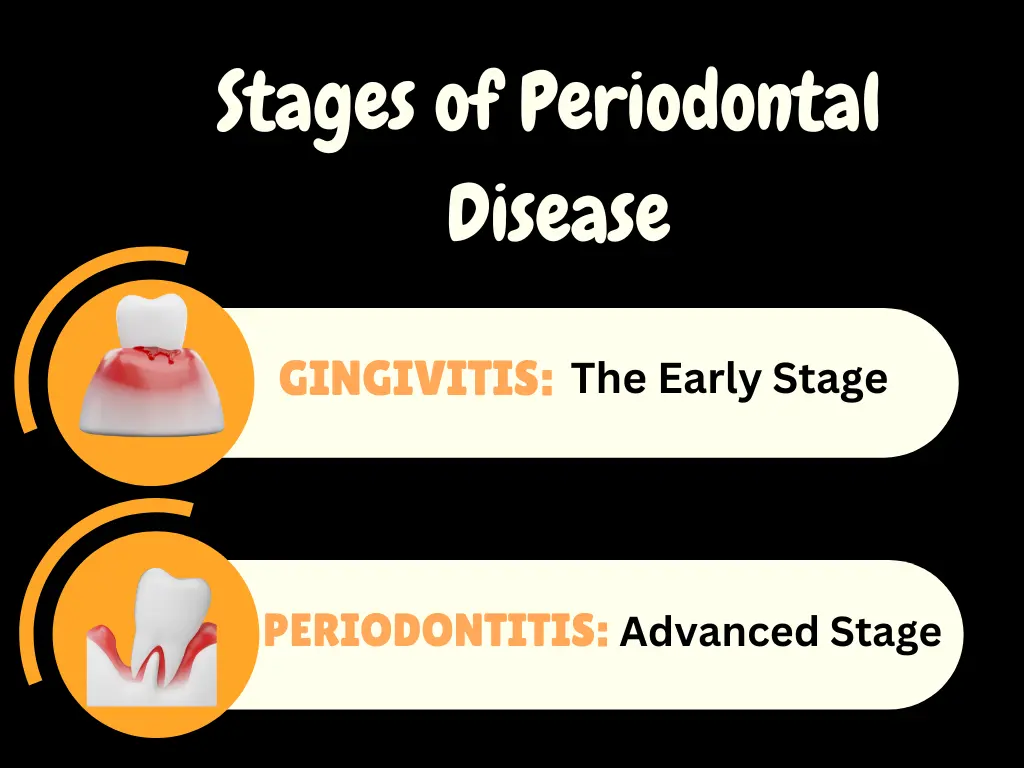Periodontal Disease (Gum Disease): Causes & Stages

Periodontal disease, commonly referred to as gum disease, is a significant health issue that affects many people worldwide.
This inflammatory condition, caused by bacteria, targets the tissues surrounding the roots of the teeth, potentially leading to tooth loss, especially in adults.
Despite its severity, periodontal disease often goes unnoticed due to its typically painless nature, making awareness and education crucial for prevention and treatment.
Understanding Periodontal Disease (Gum Disease)
In this article, we will delve into the essentials of periodontal disease, including its stages, symptoms, and the importance of regular dental check-ups for early detection.
What is Periodontal Disease?
Periodontal disease is an infection of the structures around the teeth, including the gums, periodontal ligament, and alveolar bone.
At its core, this condition is caused by the harmful bacteria found in plaque, a sticky, colorless film that constantly forms on our teeth.

Without proper oral hygiene, plaque can harden into tartar, further exacerbating gum inflammation and paving the way for periodontal disease.
Stages of Periodontal Disease
The progression of periodontal disease is classified into two major stages: gingivitis and periodontitis.

Let’s delve into the details of its stages:
1. Gingivitis: The Early Stage
Gingivitis, the initial stage of gum disease, involves the inflammation of the gingiva, or gums, without affecting the bone surrounding the teeth.
Symptoms may include redness, swelling, and bleeding during brushing or flossing. Fortunately, gingivitis is reversible with proper dental care and improved oral hygiene practices.
2. Periodontitis: The Advanced Stage
If left untreated, gingivitis can advance to periodontitis, a more severe form of gum disease characterized by the inflammation of the gums accompanied by bone loss.
Periodontitis can lead to the formation of pockets between the teeth and gums, where bacteria can accumulate and cause further damage. This stage of the disease can result in tooth looseness or loss if not addressed promptly.
The Silent Nature of Periodontal Gum Disease
One of the most challenging aspects of periodontal disease is its ability to progress without pain. Many individuals may be unaware of their condition until it has reached an advanced stage, underscoring the importance of regular dental visits.
During routine check-ups, dental professionals can detect early signs of gum disease and implement preventive measures or treatments.
Role of Regular Dental Check-Ups to Avoid Gum Disease
Regular dental examinations are vital for maintaining oral health and preventing the onset or progression of periodontal disease.
During these visits, your dentist or dental hygienist will assess the health of your gums. They will check for any signs of inflammation, and remove plaque and tartar that regular brushing and flossing might miss.
These preventive dentistry appointments also provide an opportunity for dental providers to educate patients on effective oral hygiene practices. They also offer personalized advice based on individual needs.
Final Thoughts
Periodontal disease poses a significant risk to oral and overall health. But, with proper awareness and preventive care, its impact can be minimized.
Understanding the stages of gum disease, recognizing its symptoms, and committing to regular dental check-ups are crucial steps in protecting your oral health.
So, by taking proactive measures against this disease, you can ensure a healthier smile and a better quality of life.
